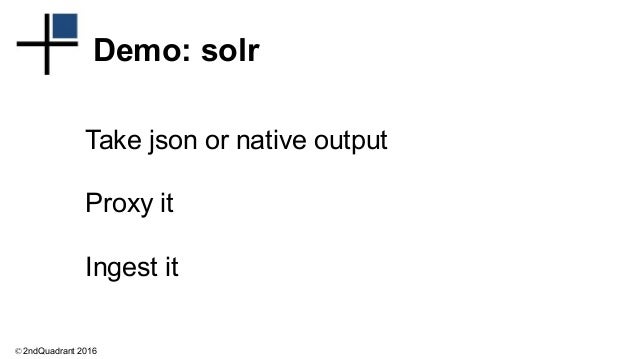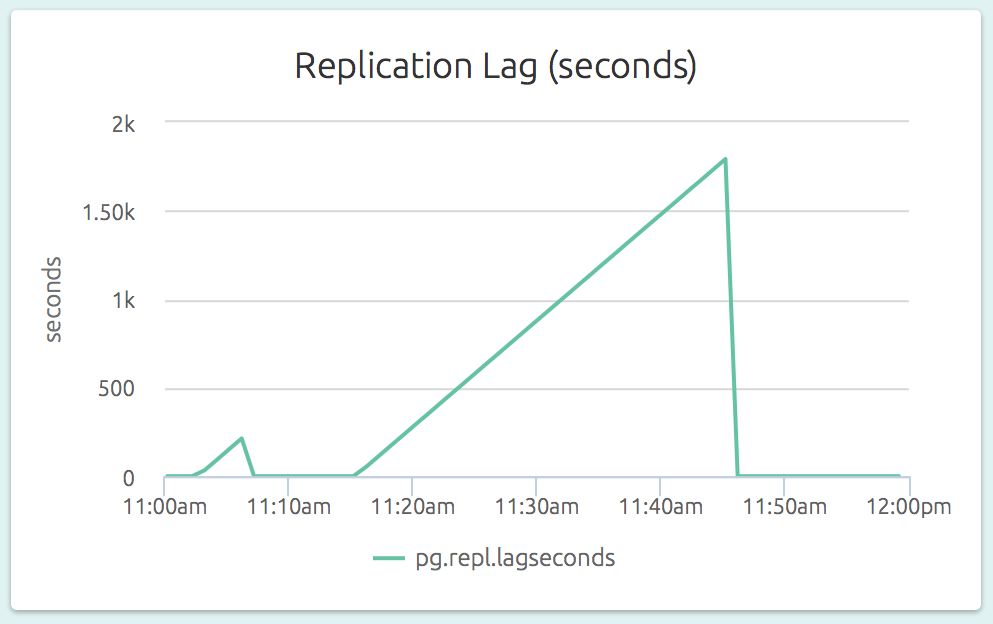Replication Slot Does Not Exist
- Error Replication Slot Does Not Exist
- Replication Slot Does Not Exist In Minecraft
- Error Relation Pg_replication_slots Does Not Exist
The first beta release of PostgreSQL 10 was announced a couple of days ago.This release brings with it the much-awaited logical replication feature.
We decided to take it for a spin and see how it works.
Streaming Replication
How to delete replication slot in postgres 9.4. Use pgdropreplicationslot: select pgdropreplicationslot('bottledwater'); See the docs and this blog. The replication slot must be inactive, i.e. No active connections. So if there's a streaming replica using the slot you must stop the streaming replica. When this slot should be active, because you have a secondary node configured using that slot, log in to that secondary node and check the PostgreSQL logs why the replication is not running. If you are no longer using the slot (e.g. You no longer have Geo enabled), you can remove it with in the PostgreSQL console session: SELECT pgdropreplicationslot ('). Dec 15, 2017 I know, but this workaround is from Samba Wiki (Samba currently does not support the DFS-R protocol required for Sysvol replication. Please manually synchronise the content between domain controllers (DC) or use a workaround such as Robocopy-based Sysvol Replication.) So when I made Samba + DC 2008 R2 I had to copy sysvol by robocopy script. Create replication slot in pgbasebackup if requested and not yet present. Hi, with the default configuration improvements so far for 10, it seems to be very easy to setup streaming replication (at. Message: 'FATAL: could not start WAL streaming: ERROR: replication slot 'geosecondarymydomaincom' does not exist'? This occurs when PostgreSQL does not have a replication slot for the secondary node by that name. You may want to rerun the replication process on the secondary node. Nov 14, 2017 If the results are “does not exist in the Registry” then there are no special settings 3. Edit exported DFS configuration files. Well, there are two parts to DFS. There are namespaces and replication. They do not have to be the same. Setup the replication and it will copy all of the information over to the new server for you - no need to. Change the -slot-name to the name of the replication slot to be used on the primary database. The script will attempt to create the replication slot automatically if it does not exist. If you're repurposing an old server into a Geo secondary node, you'll need to add -force to the command line.
The existing replication feature built into PostgreSQL is called StreamingReplication. If you aren’t familiar with it, check outour popular blog post about it.
Essentially, you can use streaming replication to maintain multiple, up-to-date,read-only replicas of a single PostgreSQL server (technically, a singlePostgreSQL cluster). This contains databases, roles (users),tablespaces and more.
With streaming replication, you get all or nothing. The replicas (standbys) arebyte-for-byte copies of the main server’s set of on-disk files. Streamingreplication is perfect for maintaining a hot standby server, to which you canfailover in case the primary server fails. They are also good for maintainingread-only replicas for analytics-related use cases.
Galaxy tab 4 geant casino. Downloading and Using Apps Apps, apps, and more apps. One of the main reasons you bought that shiny new Galaxy Tab is so you can get your hands - Selection from Galaxy Tab. Geant casino galaxy s4 Any stakes you place on a Game or Bet (including pre-purchased bingo tickets) are non-refundable as the product is virtual and is instantly consumed. If you play a Game or Bet with Real Money, funds will be drawn from your Account instantly and cannot geant casino galaxy s4 be returned. Samsung Galaxy Tab® 4 (10.1) - Support Overview. Find device-specific support and online tools for your Samsung Galaxy Tab 4 (10.1). Select another device. Activate and setup. Learn how to activate and set up your Galaxy Tab 4 (10.1). Top 10 things to do with your new tablet. Popular topics.
What streaming replication cannot do is to replicate a subset of the data in themain server. If you want to have an off-server copy of, say a single table, itwon’t be possible with streaming replication.
You also can’t modify the data in the replica with streaming replication. Let’ssay you use the replica for analytics, and need to delete the data once yourdaily batch jobs are done processing it. The deletion won’t work because thereplica is strictly read-only with streaming replication.
Streaming replication also does not work across PostgreSQL versions. You can’tupgrade PostgreSQL versions without downtime by trying to bring up a standbywith the next PostgreSQL version then failing over to it.
Typically, you’d use one of the tools listed hereto implement such requirements. But now with logical replication, it’s possibleto do most of these without external tools. Salamanca casino gun show 2018. At the very least, it is a powerful toolon which to further build customized solutions.
Know More
DBA-level monitoring for PostgreSQL
Logical Replication
Logical Replication can replay, logically, the changes (as in insert, update,delete of rows) happening to one or more persistent tables in a database.
The source server must create a named object called a Publication. Apublication serves as an endpoint from which a log of changes can be fetched bya Subscription. The subscription is created on another, a destination, server.The subscription includes a standard connection string that tells how to connectto the source server.
Let’s see how it works. First, we have a server that has a database dbsrc,which has a table t1:
We’ll also need a user with replication privileges:

Unlike streaming replication, the replication user needs read access to thetables themselves.
Let’s insert some rows into t1 before we start replication:
OK, here comes the first logical replication related command. We’ll create apublication pub1 that will serve as an endpoint for replicating changeshappening to the table t1:
Now let’s connect to another server, with another database called dbdst.Unlike streaming replication, we need to create the table t1 here first. If wetry to create a subscription without that:
it doesn’t work. So let’s create the table:
Ha! We snuck another column in there. Let’s create the subscription and see whathappens:
It’s replicated! We can see the initial set of rows in the destination table.Further changes get replicated as well:
Here they are on the destination:
Things work as expected. Let’s try some modifications on the destination and seewhat happens:
Let’s also do some modifications on the source:

And here’s what we get at the end of it all:
Interesting! We see that:
- the row we deleted at the destination stays deleted
- the row we updated only at the destination stays the same
- the row we updated first at the destination and then at the source got updatedentirely – the entire tuple has been replaced, and our changes to “val2”column have been lost
- the row we inserted at the source was replicated
Let’s try something else now. What happens if we delete the table t1 at thedestination and then recreate it?
Oops, we broke the magic! To get the sync back on, we need to refresh thesubscription:
Ah, we’re back in business! Refreshing is needed in other cases too, like if thepublication was altered to include another table.
Going From Here
There are a few more things that logical replication can do that we didn’t coverhere:
- publishing only insertions, updates or deletions to tables
- pulling in changes from multiple sources into one destination
- adding more tables into an existing publication
- transactional consistency – destinations see only complete and committedtransactions
- streaming replication – streaming and logical replication features workindependently without interfering with each other
If you’re planning to get your hands dirty trying out logical replication foryourself, here are somethings that’ll help:
- In the source server’s
postgresql.conf, setwal_level = logical,max_replication_slots = 10. - Also ensure
pg_hba.confis updated for the replication user to connect. - In the destinaton server’s
postgresql.conf, setmax_replication_slots =10,max_logical_replication_workers = 4andmax_sync_workers_per_subscription = 2. - We had to compile the binaries from the source tarball available here.
And here are links to relevant documentation:
Error Replication Slot Does Not Exist
Let us know how it goes!
Monitoring PostgreSQL With OpsDash
With our own product,OpsDash, you can quickly start monitoring yourPostgreSQL servers, and get instant insight into key performance and healthmetrics including replication stats.
Here’s a default, pre-configured dashboard for PostgreSQL.
OpsDash strives to save you the tedious work of setting up a useful dashboard.The metrics you see here were carefully chosen to represent the most relevanthealth and performance indicators for a typical PostgreSQL instance.
Replication Slot Does Not Exist In Minecraft
OpsDash understands the streaming replicationfeature of PostgreSQL and displays per-slave replication status on the master:
The replication lag (as a length of time) is also visible on a slave’s dashboard.In the graph below (part of the dashboard of a slave), we can see that the slavecould not catch up to the master’s changes for a while.
Error Relation Pg_replication_slots Does Not Exist
Sign up for a free 14-day trial of OpsDash SaaStoday!